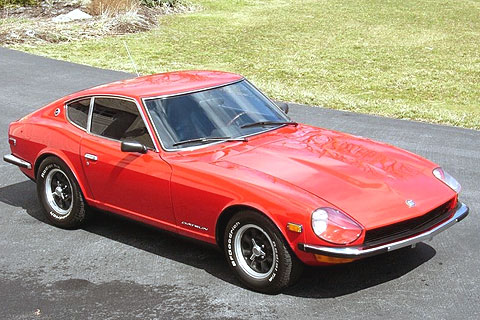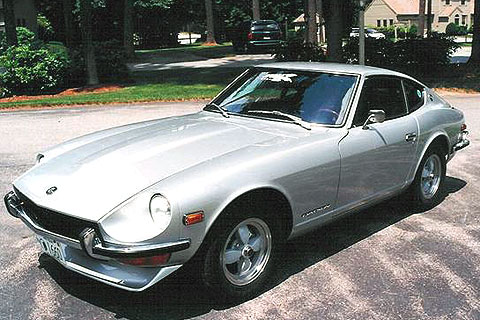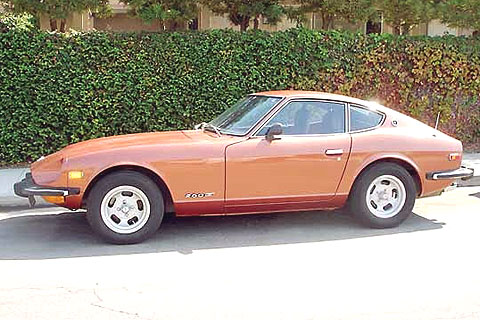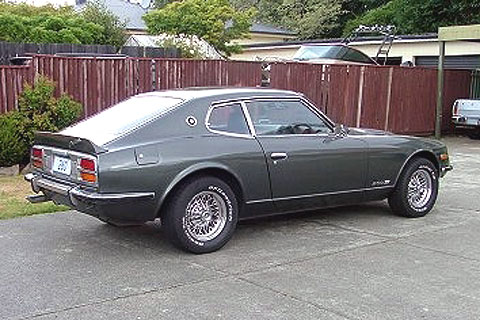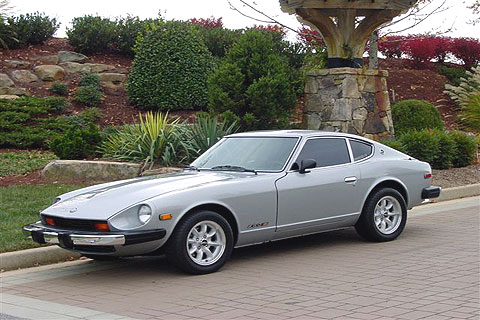With the 1970 Datsun 240Z, the Japanese auto industry arguably moved from follower to leader. Nissan copied no one with the Datsun 240Z. The 240Z was not Nissan's first noteworthy sports car, as it was preceded by the Datsun 1600 and 2000 roadsters. Very good sports cars, but they looked much like the British MGB. The mechanics under the 240Z's beautiful body was before normally only found in much more expensive sports cars. In Japan and some other markets the 240Z was called the Fairlady Z.
The 240Z was powered by a smooth-running 2.4 liter, single-overhead-camshaft, straight six-cylinder engine. For the North American market, it was rated at 151-horsepower at 5,600 rpm with a 7,000 rpm redline. Other specifications included a fully-independent suspension, rack-and-pinion steering and disc/drum brakes. The well-laid out interior with complete instrumentation could comfortably accommodate an over 6-foot tall driver and passenger . The luggage area was huge by sports car standards. The heater worked exceptionally well, the interior was draft-free, the thin bucket seats were comfortable and the firm, taut suspension provided a reasonably comfortable ride. Up until 1972, 240Zs sold in the U.S. came only with a four-speed manual transmission. Then a three-speed automatic became optional. A standard five-speed transmission did not appear in U.S. cars until the 1977 with the 280Z.
The best part was the introductory base price of just over $3,500. Because of the huge initial demand, most were "loaded" to drive up profits. These included mandatory options, expensive aftermarket wheels and tires and sometimes even blatant markups to the point where 240Zs sticker prices came out at as much as $5,500.
There were few changes to the first generation Z-cars since Nissan could sell all the cars it was building, and more. The changes made were done mainly to satisfy more stringent government safety and emission mandates. By 1973, emissions regulations started to drastically affect the performance of the 240Z when the horsepower dropped to 129-horsepower at 6,000 rpm, partly because of more conservative way the automaker rated their engines.
To recapture the performance of the initial 240Z in the face of more stringent emission standards, the 240Z was replaced by the 260Z in 1974. The displacement increased to 2565 cc and an output was 162-horsepower at 5600 rpm when unfettered by California-mandated smog equipment. "Smogged" cars were rated at only 139-horsepower at 5200 rpm. American 260Zs got new bumpers to meet 5 mph crash requirements. Nissan did a better job in integrating the new bumpers than most other automakers.
In 1974, the 260 Z 2+2 that could nominally carry four was added, though the rear area was best suited for carrying luggage on the fold down rear seats. The 260Z was about a foot longer in both wheelbase and overall length, and a couple of hundred pounds heavier. The 260 Z 2+2 represented the first step in the Z cars' evolution from true sports car to a luxurious GT giving up some performance and losing a bit of character.
The 260Z was a single year model with the 280Z and 280Z 2+2 offered starting in 1975. The "280" stood for the 2753 cc engine and it was fitted with electronic fuel injection. Horsepower was now 149 horsepower at 5600 rpm. When production of the first generation of Z-cars ceased in 1978, over 540,000 had been built. The Z easily set the record for the best-selling sports cars of all time.

